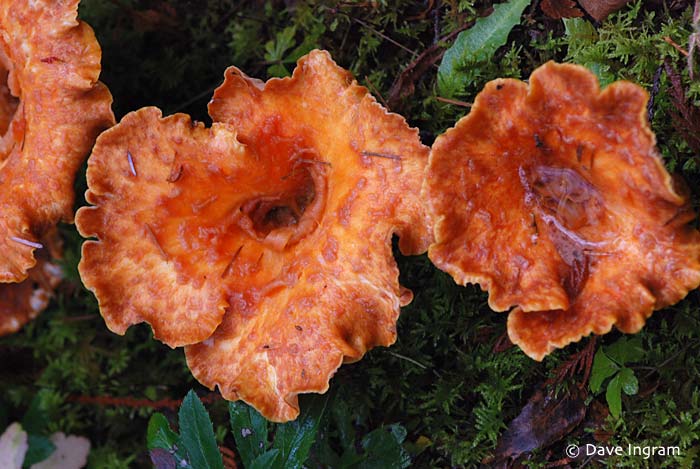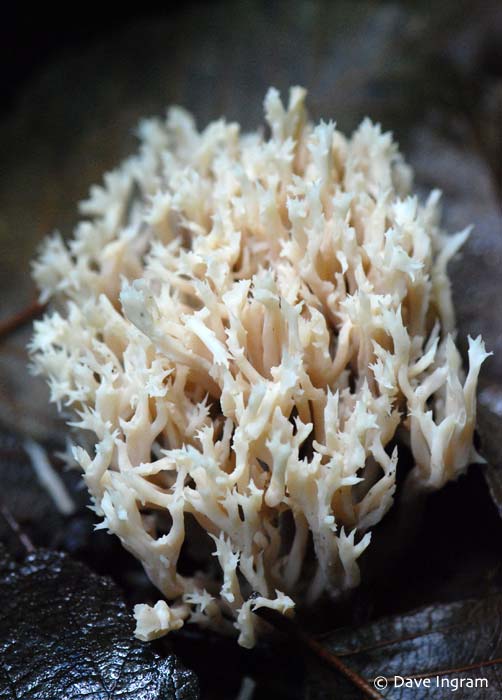One of the delights of mushroom hunting is seeing a mushroom that is so distinctive that you can identify it easily. The trails in the Cumberland Forest are excellent places to find a variety of mushrooms in the winter.
Woolly Chanterelle
One such distinctive fungi is the Woolly Chanterelle (Gomphus floccosus). With its “vase shaped” body and scaly reddish to bright orange cap (it is also commonly called the Scaly Chanterelle) it is unmistakable. We found these on the Mama Bear Trail of Tears in the Cumberland Community Forest. They were growing in association with young Western Hemlock (Tsuga heterophylla).
Despite the name, this mushroom is not recommended for eating. Many suffer gastric upsets after eating them and the mushroom has an unpleasant sour taste.
Oregon Gelatinous Coral
Also in the same area as the Woolly Chanterelles was what looks to be Oregon Gelatinous Coral (Ramaria gelatinosa var. oregonensis). This member of coral fungus often grows in association with Western Hemlock so the habitat was appropriate.
Crested Coral
Our other discovery in the Cumberland Forest was a second coral fungus, the Crested Coral (Clavulina cristata). This beautiful white coral fungus was growing on a dark section of the trail in second growth forest. The white stood out against the dark leaf litter on the ground.



